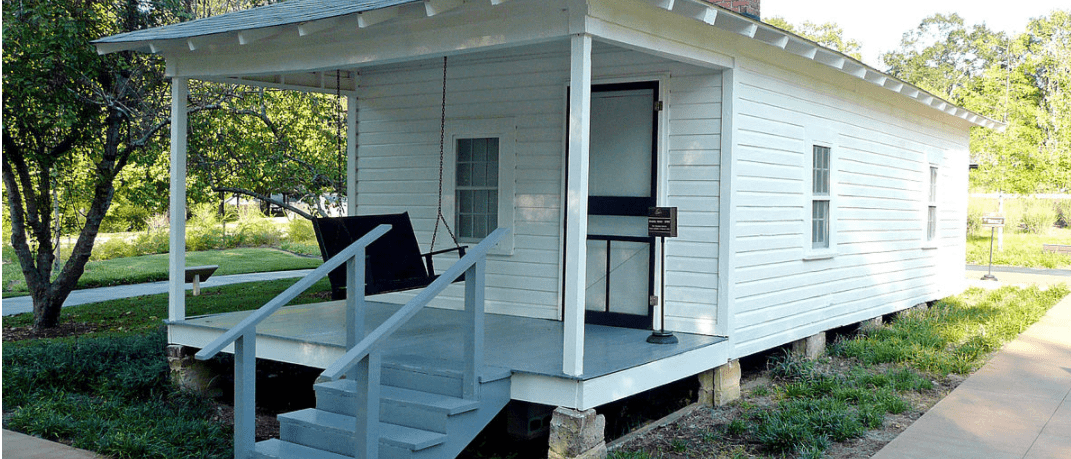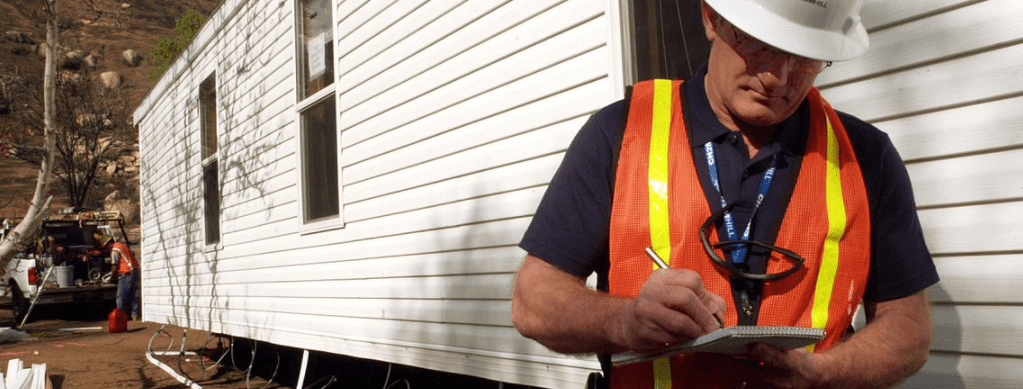If you are a mobile home owner, then in all likelihood you have heard about the HUD Code before. Being the busy individual that you are, you might not have the time to read and study the complete document with all its hundreds of clauses and subclauses. Few people do.
However, it’s still imperative that you know how you and your home can be affected by this all-encompassing set of standards. It has far-reaching consequences for anything from remodeling or renovating your mobile home to installation and even how likely you are to qualify for financing.
So, without further ado, let’s cut to the chase and see how the HUD code affects your mobile home. We have come up with what we believe to be the most important aspects. This article will focus on making the HUD code easier to digest and real-world applicable.

What is the HUD Code?
First, a bit of a lesson on the HUD code itself. It was created by the U.S. Department of Housing and Urban Development (also fondly referred to as the HUD). Its full name is Federal National Manufactured Housing Construction and Safety Standards Act of 1974. It came into effect on the 14th of June 1976, and therefore only homes constructed after this date can be considered for HUD compliance in the first place.
It’s also the only national building code in the U.S., so you don’t have to worry about a home being HUD compliant in one state but not in another. There have been two major revisions to the HUD code in 1996 and 1999 so a home older than that might no longer be compliant.
That mouthful of a name should already give you an idea of what the HUD code is all about. It’s a set of safety standards aimed at promoting the safety and build-quality of manufactured homes. It’s with this document that mobile homes and manufactured homes officially diverged into different types of housing.
Before this, these homes had a terrible track record. They had a poor reputation as their construction wasn’t well regulated. Accidents and poor performance under stressful conditions were rampant. The HUD tried to distinguish between mobile homes and manufactured homes to help them break free of this stigma. However, the name “mobile home” persisted and is still widely used.
Under the HUD Code, the safety and quality of this type of housing have improved dramatically, even beating their stick-built counterparts in some aspects.

How does the HUD Code affect me and my home regarding…
Installation
As mobile homes are not constructed on site but rather constructed in a factory and moved to a location, it’s only natural that there should be standards for the installation of mobile homes. Although many of these standards have nothing to do with the home itself, if your home does not adhere to them, it may not be HUD compliant. Where you install your home can have just as much of an impact on its safety as the build-quality of the home itself.
The HUD Manufactured Home Installation Standards spell out all the necessary requirements. Some of the things that these standards cover are:
- Flood areas: The installer should determine whether the site is in a flood-risk area based on official flood maps. The home should also have features that mitigate flood damage. The home and its appliances should be above flood level.
- Zone: Homes are constructed according to certain zones that take into account factors such as storms and their strength, wind speeds, frost, etc. The home should be appropriately zoned for the site.
- Soil conditions: These tests are also done for stick-built homes to ensure that the soil can support the structure.
- Utilities: How utilities should be hooked up to the home.
- Assembly: Various conditions on how the on-site assembly should take place.
And many, many more. You can find the entire document here. Depending on your specific situation, your home’s manufacturer may not complete the installation. In these cases, it’s imperative that you choose a reliable and reputable installation contractor. They should be willing and able to follow the specific manufacturer and model’s installation guidelines.
Mobility
You are probably saying to yourself right now, “Surely you are not going to tell me I can’t move my mobile home anymore? Isn’t that the whole point?” Well, that’s where that all-important distinction between a mobile home and a manufactured home comes in.
A manufactured home comes with all the parts for moving to another location, such as a tongue, axle, and wheels. However, it is really intended to serve as a home left at a single location all its life. There are moving services available to move a home, but this is one of those cases where just because you can doesn’t mean you should.
A home should only be moved once from the manufacturer to the installation location. Any subsequent movement may make your home non-HUD compliant. Consequently, most lenders refuse to finance a home as soon as it’s been moved more than once. It’s flat-out impossible to secure a federally-backed loan if you’ve moved your home even once. This would be unfortunate as federally-backed loans are the best and most secure type of loan you can get as a mobile home owner.
Aftermarket construction and additions

A mobile home is only built to support its own components. No additions may be made to a mobile home that bears or is supported by it in any way, simple as that. As soon as a certifier sees an addition like this (it could be a patio, roof extension or built-on shed), they will immediately suspend your HUD-compliance.
So until the addition is removed and the home is certified again, you may not be able to sell your home. State laws may even prohibit any kind of sale until the home is HUD-compliant. Furthermore, if the addition damaged the structure in any way, it’s not a sure bet that your home will earn back its HUD compliance.
That doesn’t mean you can never make additions to your home or alter it. It just means that you need to take extra care when doing it yourself or hiring a contractor. If you want to make alterations, make sure that you don’t touch the structure of the home and that the home still adheres to the prescripts we provided.
Foundation
“Wait a minute! I can’t find any mention of the foundation in the HUD Code? What kind of hypocrisy is this?” Don’t worry! The HUD Code relies on the HUD Permanent Foundations Guide for Manufactured Housing, HUD Publication HUD-7584 for the foundation. Although these are separate documents, your home needs to adhere to the latter to comply with the former.
This means that any contractor you hire to construct a basement or work on it should be aware of this publication. They must follow its standards and regulations. You should note that this guide was only published in 1996. So if your basement is older than that, you should have it inspected to see if it is up to code.
As the two codes rely on each other, you face the same consequences if your foundation is not up to par. You will struggle to find financing, the home’s value will take a hit, and you may not be able to sell your home.
Some of the requirements for the foundation:
- If your home will be in the same lot for more than a year, it must have permanent concrete footings with tie downs.
- These concrete footings supporting the carriage should be below the frost line.
- You must cover the undercarriage of the home with a moisture and rot resistant material.
- The tongue, wheels, and axles must be removed, basically rendering the home immobile.
Here is a more thorough list.
Financing & value
We won’t say too much on this. We have already mentioned in the previous sections how violating the HUD code can make your home ineligible for financing. The options are already more limited and less attractive when it comes to mobile homes so cutting off your few options aren’t a good idea.
Also, remember that potential buyers (should you want to sell in the future) might be turned off completely by the idea of not being able to finance. They can buy other homes in your home’s price range with only a 5-20% downpayment.
As you can see, this will be hard to compete with. You would either have to lower your price or risk pricing out of potential buyers’ budgets. This is in spite of the fact that your home’s value is already lower because it isn’t HUD compliant and is deemed less safe.
Without HUD Code compliance any kind of federally backed (FHA) loan is simply impossible. All the requirements, straight from the horse’s mouth, can be found here.
How to check if your home is HUD complaint
Now that we have spelled how HUD compliance affects you and your mobile home, you are probably wondering if you can check whether your home is HUD compliant. We like how you’re thinking! As a manufactured home owner there are a few factors that you can easily examine for HUD compliance by yourself.
Before we get into this, please note that since many parts of the HUD rely on performance testing under certain conditions, it’s not explicitly spelled out. It’s also doubtful that the average Joe will have the means and expertise to inspect a home for compliance according to these standards.
As such, there is a limit to how far you can test your home’s HUD compliance by yourself. This is one reason why the FHA and most lenders require you to get a certificate from a professional inspector.

However,
- if your home was constructed after 15 June 1976,
- by a HUD Safety and Standards compliant manufacturer,
- is equipped with either a HUD Data Plate or Certification Label,
- installed according to the Model Manufactured Home Installation Standards
- on a foundation that complies with the HUD Permanent Foundations Guide for Manufactured Homes (PFGMH), dated 1996, and
- you haven’t modified the structure of the manufactured home since,
then it should still be a manufactured home that adheres to the HUD Code.
Basic HUD requirements
Here are some of the most basic requirements that your home should meet:
- Any manufactured home must have at least two exit (egress) doors. In single-wide homes, they must be at least 12 feet apart and in double-wides at least 20 feet. This is to ensure easy exit from any part of the house in case of a fire.
- There should be clear exit routes from every bedroom to at least one of these exit doors. You should not have any lockable doors installed on this route.
- There can be no structural addition to the manufactured home that leans on, bears, or is supported by the mobile home. Manufactured homes are constructed to handle only their own weight and nothing more. Additions can be made but should be entirely self-supportive.
- All kitchens and bathrooms must have mechanical ventilation systems.
- The underbelly of the home should have both a belly wrap underneath the home and skirting running around it in good condition.
Stay safe and stay compliant!
We hope that this article has helped you decipher the HUD code. Now that you understand it, you can be aware of the ways it affects your everyday life. Keep compliant for the sake of your financials and the safety of you and your family. And always remember to contact a professional should you have any doubts.


